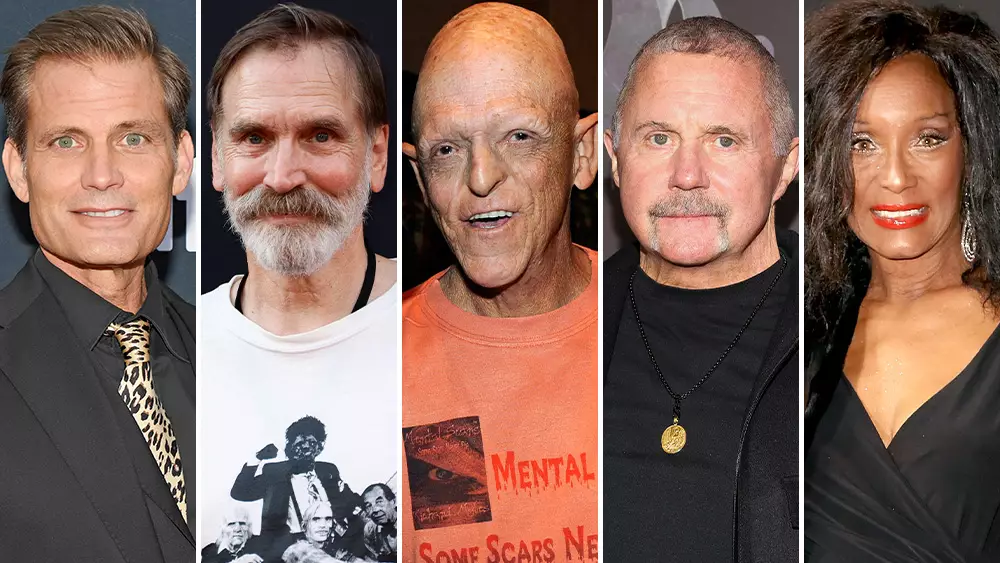In an age where blockbuster franchises dominate the cinematic landscape, the resurgence of independent horror films offers a vital breath of fresh air. The upcoming projects “Spawn of the Living Dead” and “Organism 46-B: The Unseen” exemplify this movement, blending nostalgic horror elements with innovative storytelling. These films are not just attempts to capitalize on past successes but are crafted with meticulous attention to the genre’s roots while boldly infusing new themes and ideas. The decision to shoot both films simultaneously emphasizes a strategic, cost-effective approach that leverages Canada’s burgeoning film infrastructure, signaling a new era where indie filmmakers are no longer sidelined but are poised to reshape horror’s future.
His-tory Meets Hope: An Intersection of Legends and New Talents
What sets this venture apart is its impressive ensemble cast, featuring seasoned icons such as Casper Van Dien, known for the campy sci-fi classic “Starship Troopers,” and the formidable Bill Moseley of “The Texas Chainsaw Massacre 2” fame. Michael Berryman’s distinctive visage from “The Hills Have Eyes” and Kane Hodder’s legendary status as Jason Voorhees introduce a sense of continuity with horror’s rich history. Adding a touch of glamour, 70s Bond girl Trina Parks from “Diamonds Are Forever” joins the lineup, bridging generational gaps within the genre. The inclusion of these veteran actors doesn’t merely serve as fan service but enhances authenticity and depth, anchoring the films in a legacy that seasoned horror fans appreciate and new audiences can respect.
Meanwhile, the creative helm is entrusted to Ani Kyd Wolf, a multi-talented filmmaker, actor, and musician. Her vision for these projects reflects a daring independence, aiming to challenge the conventional mold of horror cinema. Wolf’s emphasis on shooting back-to-back works as a testament to her commitment to efficiency and artistic cohesion, creating a cohesive universe that allows organic storytelling to flourish. Such ambition underscores a broader trend in indie filmmaking—embracing risks and collaborating with industry veterans to elevate their craft beyond the constraints of low-budget production.
Technological Innovation and Practical Effects as Game Changers
A critical aspect of these films’ potential lies in their commitment to high-quality practical effects, overseen by renowned makeup and FX artist Todd Masters. His significant experience in series like “True Blood” suggests the zombies and creatures in “Spawn of the Living Dead” will move beyond cheesy rubber masks into visceral, tangible horrors that resonate with modern audiences craving authenticity. Similarly, the Antarctic creature in “Organism 46-B” promises a chilling blend of biological terror and sci-fi intrigue, emphasizing atmosphere and physical effects over CGI, which can often feel sterile or overused.
This focus is intentional; as horror enthusiasts increasingly yearn for genuine scares, practical effects lend a visceral impact that digital effects sometimes lack. The choice to invest in these techniques indicates a thoughtful understanding of the genre’s evolution. It recognizes that, amidst rapid technological advancements, the power of practical FX remains unmatched in terms of immersive storytelling.
The Independent Future of Horror: A Critical Reflection
This development underscores a pivotal shift in the filmmaking industry: the ascension of independent horror as a dominant artistic force. The strategic use of tax incentives, advanced studio facilities, and experienced actors demonstrates that indie productions can operate on a scale once reserved for major studios. It also reflects a broader industry acknowledgment that fresh ideas and passionate storytelling can outshine high-budget counterparts, especially within a genre as adaptable as horror.
However, this approach is not without critics, and a self-critical perspective reminds us that enthusiasm must be balanced with pragmatic storytelling, cohesive narrative arcs, and compelling characters. The challenge remains whether these projects can transcend their experienced cast and effects to deliver genuinely innovative horror that captures audiences’ imaginations. The balance between homage and originality will determine whether these films become notable entries or mere nostalgic fare.
The bold strategies of filmmakers like Ani Kyd Wolf and producers like Nuala Quinn-Barton signal a promising chapter for independent horror. By harnessing veteran talent, integrating cutting-edge practical effects, and embracing the creative freedom endemic to indie projects, these films could redefine what low-budget horror can achieve. Yet, critical self-awareness suggests that true success depends on more than star power and visual effects—it hinges on storytelling that resonates deeply and leaves a lasting impact on viewers. If executed with genuine passion and innovative vision, this new wave of horror promises to be both thrilling and transformative.

